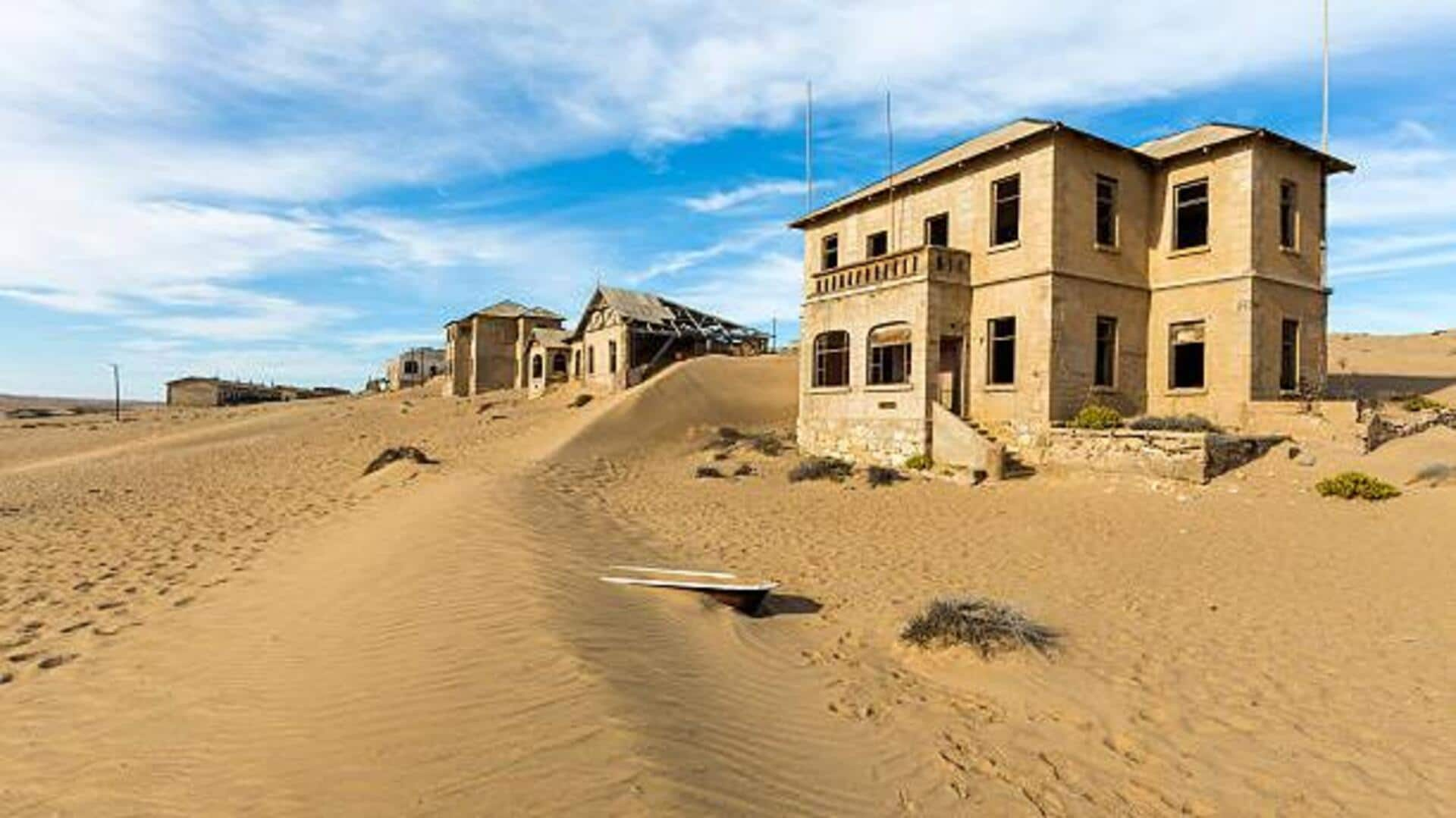Africa's abandoned towns, each has a story to tell
What's the story
Namibia, while renowned for its expansive deserts and abundant wildlife, holds a lesser-known yet equally captivating allure: a landscape dotted with intriguing relics of abandoned towns.
These ghost towns, remnants of once-prosperous mining communities, now serve as silent testaments to the relentless march of time.
This article explores the unique charm of these forgotten places, shedding light on their history and the growing appeal they hold for intrepid travelers.
Deserted gem
The lure of Kolmanskop
Kolmanskop, Namibia's most famous ghost town, was once a bustling diamond mining community in the early 20th century.
However, it was abandoned to the desert when larger diamonds were discovered further south.
Today, it stands swallowed by sands, a surreal scene frozen in time.
You need a permit to enter, it costs $8. You can roam around the once rich town, which is now a photograph of history.
Forgotten shores
The mystery of Elizabeth Bay
Elizabeth Bay, while not as well-known as Kolmanskop, holds its own eerie allure. It is located approximately 30 kilometers from Luderitz.
This ghost town, a remnant of the diamond rush, was abandoned in the late 1940s.
You may need special permission due to the presence of active mining nearby.
Prepare to witness the desolation of decaying structures surrendering to the unyielding encroachment of waves and desert.
Avian paradise
Pomona: A birdwatcher's haven
Pomona may not be as easily reachable or as well-maintained as Kolmanskop, but it holds a different appeal - a thriving birdlife amongst the ruins.
The same area that once echoed with the hopes of diamond miners now calls to nature lovers and birdwatchers eager to spot desert-adapted species amidst the remnants of history.
Travel smart
Practical tips for visiting ghost towns
Travelers should come prepared when visiting these remote sites. Check access requirements and obtain permits ahead of time.
Dress comfortably with sturdy shoes for uneven terrain. Bring plenty of water and snacks, as there are limited to no facilities.
Finally, show respect by not removing artifacts or damaging the sites. This way, you ensure a respectful journey into Namibia's past.
